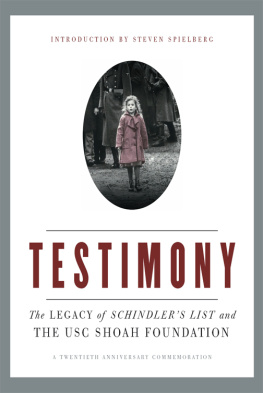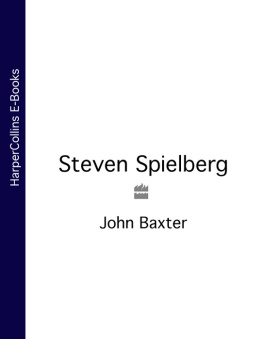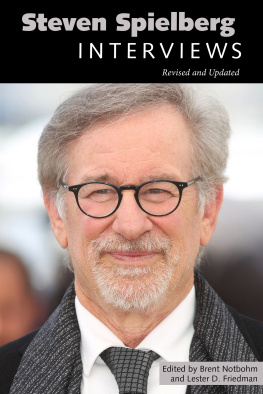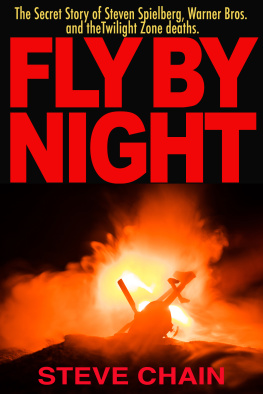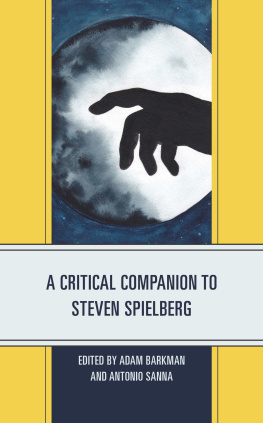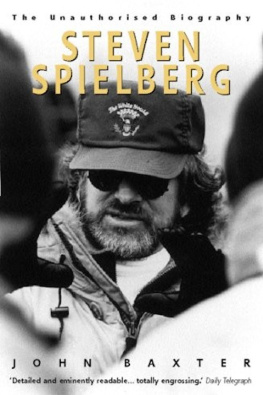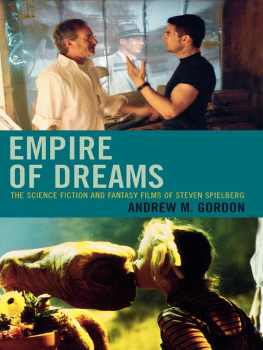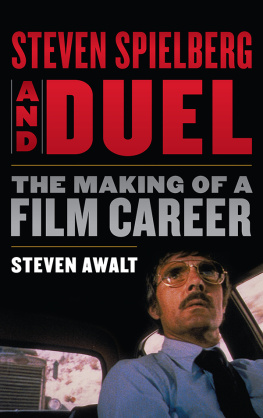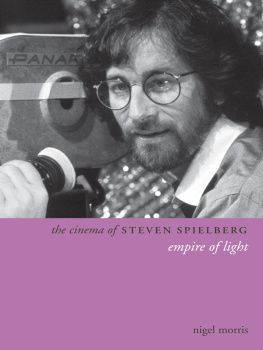INTRODUCTION
FACE TO FACE WITH TESTIMONY
by Steven Spielberg
I am not an authority on the Holocaust.
The only authorities are the survivors themselves.
I am, however, a steadfast ally of the people who I encountered while making Schindlers List, and an advocate for the faces and voices of these survivors. Their firsthand accounts of the atrocities of World War II remind us that history is always relevantnot only because we can learn from these crimes against humanity, but because recalling and retelling can show us that one voice can change the world and the way we see the world. One voice can move us to act. This call to action is at the very core of Schindlers List and the work of the USC Shoah Foundation, and it says: One person can change the world, and that person is you.
As a filmmaker, I have always adhered to the old adage seeing is believing, and this was never more true than with the making of Schindlers List and the creation of the foundation. It was in 1982 that my mentor, Sid Sheinberg, then president of Universal Pictures, shared with me the New York Times book review of Thomas Keneallys Schindlers List. Sid optioned the film rights to the story of Oskar Schindler, an opportunist who joins the Nazi party for business advantages and ends up saving the lives of more than one thousand Jews during the Holocaust.
One voice can move us to act. This call to action is at the very core of Schindlers List and the work of the USC Shoah Foundation, and it says: One person can change the world, and that person is you.
I knew survivors. In fact, some of them were my earliest teachers. My grandmother had taught English to Hungarian survivors when I was little, and they taught me how to read numbers by showing me the numbers that had been tattooed on their arms during their time in the concentration camps. It didnt take long for me to realize that I had a deep affinity for what Sid had found and, furthermore, a profound respect and curiosity for the plight of the survivorswhat they experienced during the war and how they managed to live the rest of their lives with death and genocide entrenched in their subconscious. It all seemed unimaginablebut then again, to imagine a world where their stories were not documented seemed unconscionable.
While I was moved by the book, it was almost ten years after reading it that I found myself ready to make Schindlers List. Id like to think that with age comes an increased empathy for others, and I think that is true with some of us, but empathy is relative to our own tragedies and personal struggles. And so is our understanding of mortality. Its not that after making E.T. and Indiana Jones, I suddenly decided to settle down and make more serious, more adult pictures. We dont just grow up overnight. But we do often have children, as I did, and through that experience I gained a deeper love for life and a belief in the need to contribute meaningfully to others lives. Sure, I also had a fear of getting older, as we all dobut it was during those ten years after E.T. in my professional life with The Color Purple, Empire of the Sun, and Always, and my personal foray into fatherhoodthat I got a good grip on the idea of mortality. We will not be around forever to tell our stories, to teach our children, to make the contributions I so desperately wanted to make. Schindlers List would have to be more than a creative endeavor. Making a film about the Shoah would prove to be a great honor but also an enormous social responsibility.
We invited many survivors to visit us at each of our locations during filming, and I particularly remember one who visited us in Krakow, a woman named Niusia. She asked me for a tape recorder. Then she asked me to write her story down. And then, like many others, she said, Please, tell my story after you tell Oskar Schindlers. It was then that I understood: they were not looking for me to make a movie about their livesthey were looking for a voice. All of them inspired me to see the untapped educational value in testimony. With their voices, eyewitnesses could and should change the world. And I wanted to help them do this before they were gone, and with them, our ability to learn from them. I knew that we could not just give Niusia and the other survivors a tape recorder. We needed to see them as well as hear themto interview them about their lives during the Holocaust, but also about life before and after the war. The important thing was to give them a platform to be seen, to be heard, and to be teachers.
That platform, Survivors of the Shoah Visual History Foundation, was established in 1994 to videotape interviews with survivors and other witnesses to the Holocaust and World War II. Over the four years that followed, nearly 52,000 testimonies were recorded in 56 countries and 32 languages. It was and continues to be the largest collection of its kind in the world. We made a promise to interviewees, a promise I feel we have honoredthat their testimony would be saved and shared for the benefit and progress of mankind. The fulfillment of this promisewhich today continues to be made to Rwandans, Armenians, Cambodians, and other survivors and witnesses to genocide who give testimonyis pursued at the USC Shoah Foundation, whose Visual History Archive is a growing global resource for research, education, and ultimately, action!
Spielberg talks with Stephen D. Smith (left), executive director of the USC Shoah Foundation, and Holocaust survivor and educator Rene Firestone.
Kim Fox Photography
We made a promise to interviewees, a promise I feel we have honoredthat their testimony would be saved and shared for the benefit and progress of humankind.
Spielberg with students at the IWitness Video Challenge launch, February 2013.
Kim Fox Photography
The most important legacy of Schindlers List is the work of the Shoah Foundation. My hope with the film was to reach people with a compelling and deeply human story that would inspire them to think twice about their own humanity. My hope for the foundation was to expand upon that inner reflection, to make sure that once we bore witness to these deeply personal stories, we would figure out how to take that knowledge and make worthwhile contributions to the world.









